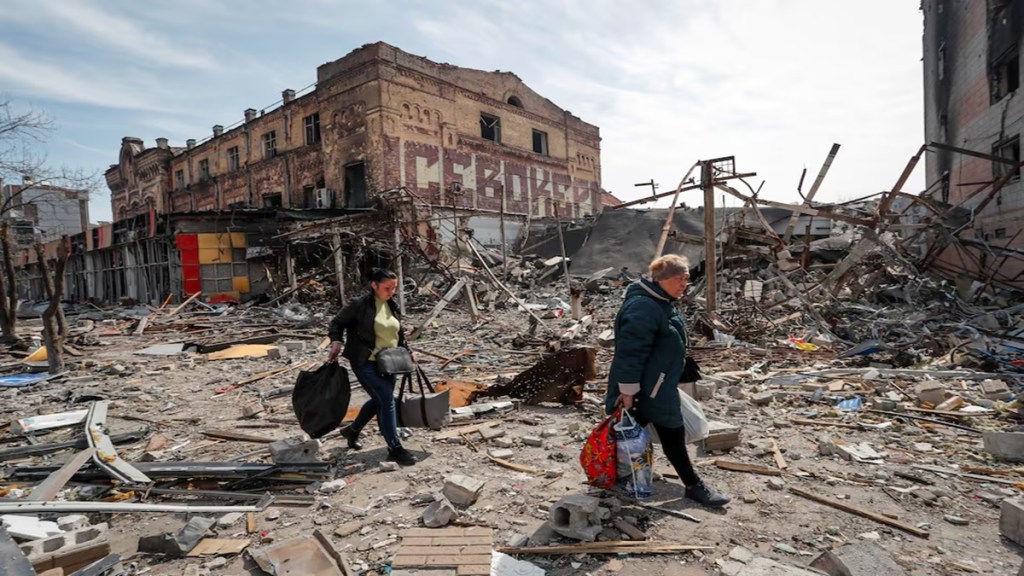By N Chandra Mohan
Prospects for peace in Ukraine, which is fighting Russia on its own territory since February 2022, appear to recede by the day. Look no further than the humiliation suffered by its President Volodymyr Zelenskyy when he recently met US President Donald Trump. The latter earlier claimed that he can stop the war in a day and blindsided Europe, if not Ukraine, by talking directly to Russia’s President Vladimir Putin to “immediately” end this conflict. Zelenskyy sought to sign a minerals deal in return for US security guarantees to deter further Russian aggression. No such deal was signed as the meeting swiftly unravelled, with Trump lashing out at Zelenskyy and issuing an ultimatum, saying that he would “make a deal (on the war) or we’re out”.
This ill-fated meeting took place against the backdrop of Washington and Moscow already having talks in Riyadh — attended by US secretary of state Marco Rubio, national security advisor Mike Waltz, and special envoy Steve Witkoff, and Russia’s foreign minister Sergey Lavrov and foreign policy advisor Yuri Ushakov — without Ukraine and Europe at the table. At the Munich Security Conference, US officials dismissed Ukraine’s demands for a return of all seized territories and its North Atlantic Treaty Organization (NATO) membership as “unrealistic”; that Ukraine’s security guarantees would henceforth be provided by Europe and not the US. Ukraine’s interests appear to have secondary importance to the US President’s primary intention to normalise relations with Russia.
Peacemaking is problematic stemming, in good part, from how the warring parties perceive the interlocutors. The US is not a disinterested peacemaker as it sought a price or payback for its support for Ukraine though securing 50% ownership of its mineral deposits, including graphite, lithium, and uranium. Zelenskyy initially rejected this (but later relented) as too focused on US interests without offering any specific security guarantees. According to Zelenskyy, “A ceasefire without security guarantees is dangerous for Ukraine. We have been fighting for three years and Ukrainians need to know that America is on our side.” Trump hardly provided any assurances in this regard while trying to extract as much as possible from the minerals deal.
What is this minerals deal? Ukraine has huge deposits of lithium, graphite, cobalt, titanium, and rare earths that are essential for a range of industries, from defence to electric vehicles. Interestingly, a fifth of these are located in territories seized by Russia since the war began. Trump says that the US is owed $500 billion of minerals in exchange for past military assistance, although it has only provided $69.2 billion since 2014. This demand has been spun by US treasury secretary Scott Bessent as a partnership that will ensure revenues from natural resources will be allocated to a fund focused on the long-term reconstruction and development of Ukraine, where the US will have economic and governance rights in those future investments.
Russia, for its part, clearly sees Trump’s peace initiative as an opportunity to return from the cold. The slanging match between Trump and Zelenskyy at the White House is music to its ears. Washington and Moscow’s talks at Riyadh were extremely “positive” as they decided to appoint high-level teams to work on a path to end the conflict, restore full diplomatic ties, and explore closer relations and economic cooperation in the future. No specific time has been decided for a one-on-one meeting between Trump and Putin. The concern in Europe, clearly, is of Trump conceding to Russia’s demands to stop the eastward expansion of NATO, and perhaps even dismantling the US-led western sanctions regime imposed since it annexed Crimea in 2014.
All eyes now are on whether a sidelined Europe — which has rallied behind the beleaguered Zelenskyy — steps in to secure peace in Ukraine. There is a new UK-France proposal that its leaders will discuss with Trump. It involves a one-month truce with Russia, spanning air, sea, and infrastructure with the US providing cover for troops from a European “coalition of the willing” to secure the ceasefire. Europe believes the minerals deal must be signed as it would give the US an economic stake in Ukraine and deter Russia from invading again. The only problem is that the US is lukewarm to providing any backstop and has paused aid to Ukraine, while Russia considers it “unacceptable” to have NATO peace-keeping forces in Ukraine.
While Trump believes that Russia is willing to stop the fighting, the fact remains that wars do not end unless the warring parties involved feel the need to silence their guns as they cannot achieve their military objectives. This does not seem to be the case at present. Ukraine is unfazed by the daily barrage of Russian missile and drone attacks on its cities as it is emboldened by seizing Russian territory in the Kursk region. Russia continues to register significant gains in Ukraine’s eastern region. Both sides seem determined to keep on fighting. Clearly, there is a long road ahead for this conflict to reach a conclusion, which sets objective limits to the US’ mediation efforts for an “immediate” end to the fighting on terms that are favourable to Russia.
The writer is an economics and business commentator based in New Delhi.
Disclaimer: Views expressed are personal and do not reflect the official position or policy of FinancialExpress.com. Reproducing this content without permission is prohibited.


